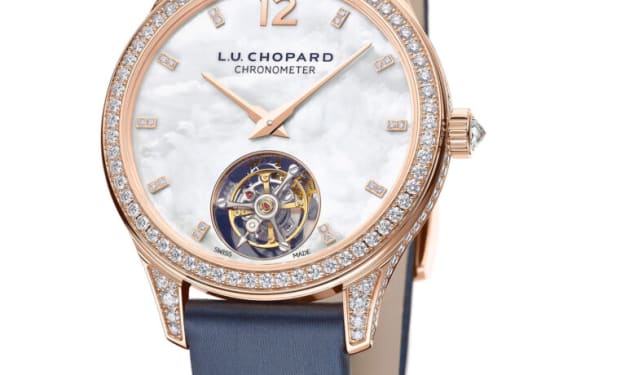VACHERON CONSTANTIN MÉTIERS D’ART TRIBUTE TO GREAT EXPLORERS COLLECTION
The Vacheron Constantin Métiers d’Art Tribute to Great Explorers Collection pays homage to three Portuguese mariners, Bartolomeu Dias, Vasco da Gama and Pedro Álvares Cabral.

Vacheron Constantin’s Métiers d’Art is a special category in the maison’s offerings. The timepieces included in this collection pay tribute to the decorative techniques used in watchmaking and jewellery. As such, the dials are the focal point, a display of art in miniature. Using magnification and small tools, these master craftsmen and women, including engravers, enamellers, guillocheurs, gem setters and, of course, watchmakers, turn your wrist into a mini gallery.
This year, the historical Maison revisits the Vacheron Constantin Métiers d’Art Tribute to Great Explorers collection, completing the trilogy presented in 2004 and 2008. The past editions singled out the intrepid adventurers Magellan, Zheng Hé, Christopher Columbus and Marco Polo. Now, the 15th-century Portuguese sailors Bartolomeu Dias, Vasco da Gama and Pedro Álvares Cabral get their turn in the limelight.
Bartolomeu Dias claims fame as the explorer who discovered the Cape of Good Hope in 1488, and was also a member of Vasco da Gama’s fleet 10 years later. In 1500, Pedro Álvares Cabral discovered a new world, Brazil, while Vasco da Gama was the first to travel from Europe and Asia by sea, before reaching the Indies in 1498.
To celebrate the voyages, Vacheron visualises each of the explorers’ noteworthy travel routes on the dial. Each route was inspired by the 1519 Miller Atlas. A painted reproduction resides in the Portuguese Maritime Museum in Lisbon. The Flemish artist Antonio de Holando absolutely deserves mention for creating the original atlas, considered a masterpiece of Renaissance cartographic documents from Portugal. This map, also referred to as the Lopo-Homem Reineis atlas, took three years for de Holando to complete!
To realise the vision for the Great Explorers series, Vacheron employed the Grand Feu enamel technique, one I like to call painting with fire or fire painting. The patience, precision and skill required to get a perfect dial would test the will of any sane person. To start with, the artisan crushes the colour of the enamel he or she wants to use into a fine powder, which is then mixed into a paint-like consistency. Each colour is applied separately and then fired in a kiln to bring out its lustre and depth.
Each firing poses the heart-stopping risk of a cracked dial, which means the artisan has to start over. For these explorer compositions, it takes an artisan a full month and 11 separate firings in an 800℃ kiln to complete. Can you imagine the dial cracking on firing 10 or 11? An excellent in-depth feature about the delicate art of enamelling can be found here.
Take a close look at the dials and you’ll see the level of detail possible with miniature fire painting. Red lines trace each voyager’s path, as ships flying billowing flags sail past continents. Each continent’s indigenous wildlife is deftly depicted on the dial. You can also see the silhouettes of crew members and the individual feathers of birds. The wind rose, a crucial navigational tool, guides the fleet in colourful glory on the left of the dial.
Vacheron powers the Great Explorers collection with its self-winding Calibre 1120 AT, incorporating a satellite hours module. This interesting time display allows the hours and minutes to wander around the dial, just as explorers did around the world. Beneath the dial, the hours wheel has the addition of three arms, each of which has a disc with four hour markers driven by a cam, shaped in the brand’s Maltese Cross emblem. A nice touch is the 22-carat pink gold rotor engraved with a wind rose. In a 41mm 4N pink gold case, the watches appear slim on the wrist, measuring just 11.68mm in height.
The timepieces in the Métiers d’Art collection are all extraordinary in their own way. The Great Explorers collection stands out not only for its spellbinding execution of an important part of maritime history, but also for the critical importance of time in calculating the route in order to reach the correct destination and not getting lost.





Comments
There are no comments for this story
Be the first to respond and start the conversation.